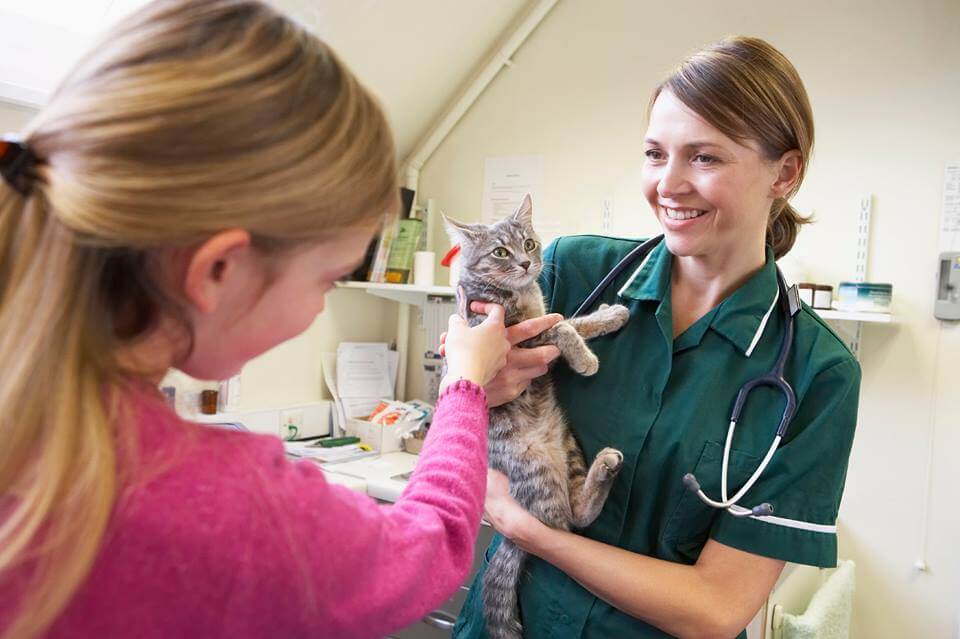Check out the Michigan Humane Society blog on Mondays to see common veterinary questions answered. If you have an immediate medical concern with your pet, please call your veterinarian! If you have a non-urgent question you would like answered on the blog, you can comment here or email us at mail(at)michiganhumane.org.
“My cat hates being in his carrier when going to the vet or traveling. Any tips on how to help him be less distressed?”
Veterinary care is important for cats, but getting your feline friend to the veterinary clinic can be stressful. There are several things you can do to try to make the experience less scary. First, purchase a carrier that has hard sides and is able to be opened from the front and top. A carrier with an easily removable top half is preferred. That way your cat can stay in the bottom half of the carrier with a familiar blanket or towel during the veterinary exam. Do not try to take your cat to the clinic without a carrier. It can be dangerous for your cat and cause even more stress.
Do not bring the carrier out only when your cat has a veterinary appointment. Keep the carrier in a room where your cat spends a lot of time. Keep a cozy blanket and some favorite toys inside. Offer your cat food and treats near the carrier, gradually getting closer to the carrier and eventually placing the treats inside. Sit quietly next to the carrier while your cat is eating. After your cat seems comfortable eating inside, close the door for a few moments, offering treats and positive praise to your cat. Open the door and offer more treats. Eventually work up to closing the door and gently lifting the carrier up and calmly walking around, feeding treats through the closed door. This process can take time, especially with fearful cats that associate the carrier with stressful events. It may take time before your cat lets you close the door. Do not rush the process.
Once your cat seems comfortable being inside the carrier, go for a short car ride then come home. Go slowly through the steps. Calming pheromone sprays such as Feliway may also help with the process. Stay calm and speak gently to your cat. With some time and effort, you can help make veterinary visits less scary for your cat and less stressful for you.


